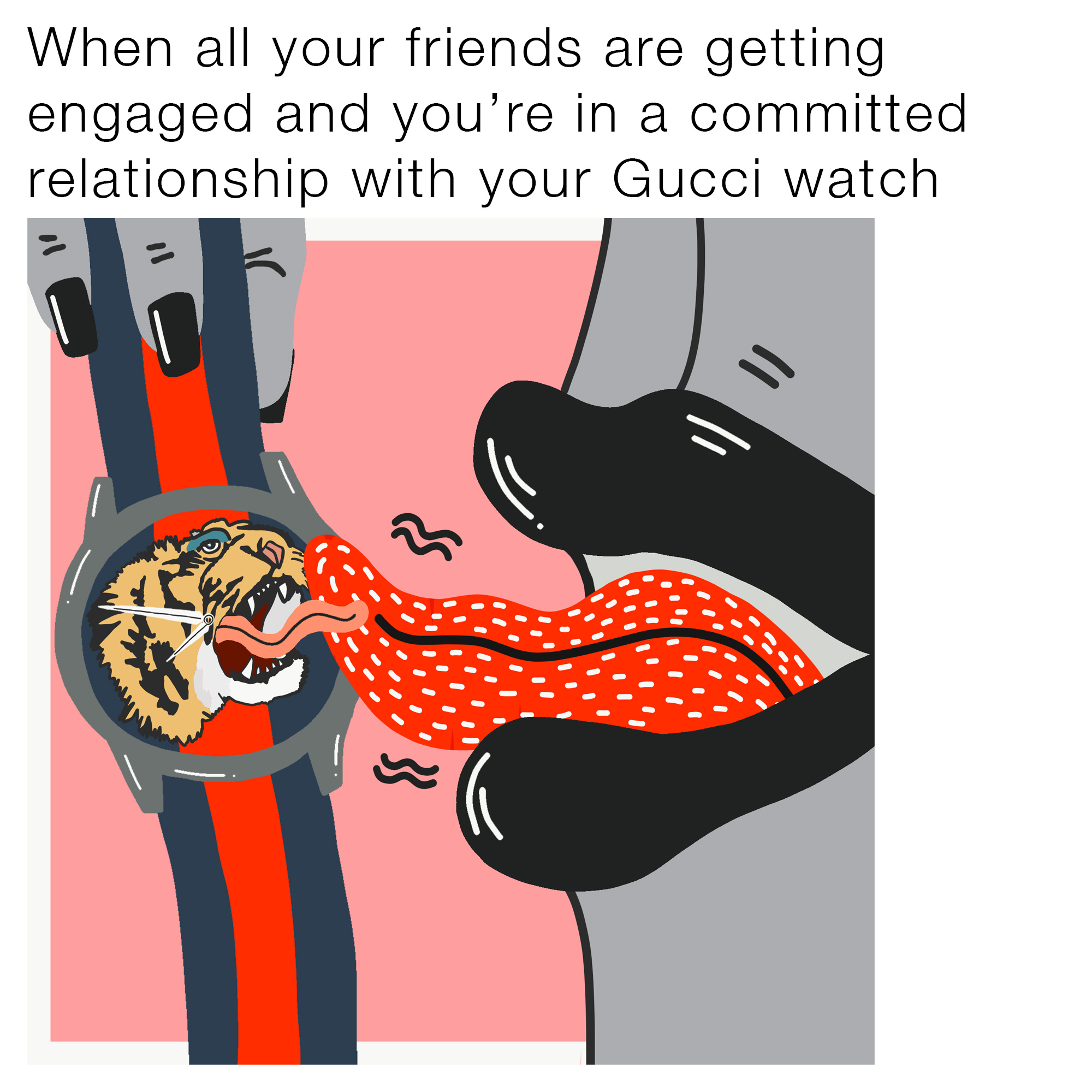The advent of technology has redesigned the marketing industry. “Digital marketing” has opened multiple avenues for companies to showcase their products, ranging from having their own website to pages on social media platforms such as Facebook and Instagram. Marketing professionals are constantly exploring this new world of Digital media and are set out to discover ways to promote their products.
In early 2017, the luxury giant Gucci Inc. made a bold move by using memes to advertise their latest watch collection (McCarthy, 2017). A meme is a catchphrase or piece of media which spreads often for satirical purposes via the Internet. They have become extremely popular among millennials who use them as a daily source of entertainment. All memes have a particular theme and are based on all sorts of real-world issues.
This advertising campaign called #tfwgucci based on a meme theme known as “that feeling when”, was develop by Gucci’s creative director, Alessandro Michele. Here are a few of their best-rated posts.




Gucci tried it’s best to remain true to their vintage brand essence while still trying to adapt to this new platform and it seems like they were pretty successful since a lot of people were impressed by Gucci’s creativity and reacted positively.
However, it is fair to say that the majority weren’t very happy. Most people thought that the posts were cringe-worthy and lame. After analysing this situation myself by reading several retweets on these memes (some of which are shown below) I think people reacted like this probably because they think of memes as a fun space to socialize and watching Gucci capitalize it and turning into a form of advertisements was what annoyed most people. Furthermore, as Chelsea Leong, a fellow Comm 101 student mentioned on her blog, that since memes are a highly informal, easy to create and easily accessible, this meme campaign may be seen with negative connotation by some of Gucci’s elite and more elderly customers, and may possibly have devalued the brand’s status for them.
Diving into the details it was seen that Gucci’s Instagram had a reach of 120,089,317 people and the meme posts received an average of 1,986,005 likes, giving them an engagement rate of 0.5%. Although this seems extremely low, it’s significantly higher than the usual average engagement rate of 0.4% (Hudson, 2017).
In my personal opinion, although the campaign received excessive criticism, it still ended up grabbing people’s attention. Chelsea described this campaign as “Buzz Worthy” as stated that “it created viral interest and word of mouth to promote their new watches”. I do admit that they could’ve done a better job with the content, especially a better focus on the humor, however in the end it did the job it was meant to, and I guess that’s all that matters.

Words: 447
Works Cited:
